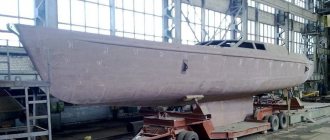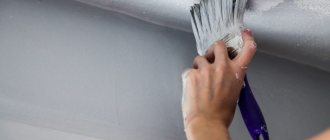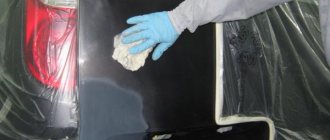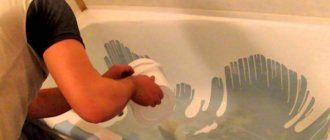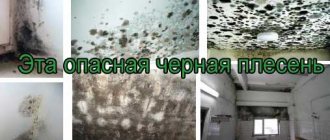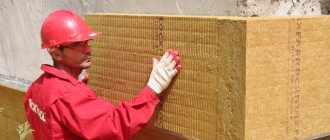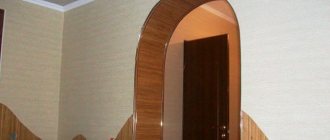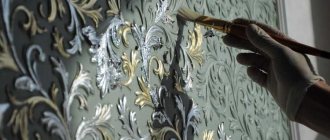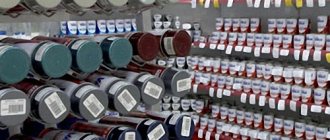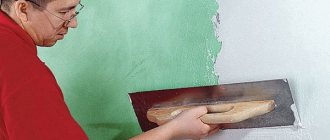When carrying out repair work, it is necessary to carefully prepare the base for applying finishing materials. A lot of effort and time is spent on removing old paint. When carrying out repairs, you can use an alternative method and apply a variety of primers over the surface of the old paint. Today we’ll talk about the process and options for mixtures suitable for the work.
Is it possible to apply primer to old paint?
Since ancient times, paint has been able to decorate and protect a surface. During operation, the old layer begins to peel off. But updating it is impossible without preparation. In this case, a paint primer will come to the rescue, making the paintwork durable and strong.
Many people planning to make repairs are interested in whether it is possible to apply a primer to oil-based or water-based paint. Before applying any materials, be sure to treat the old paint layer to prevent it from cracking and peeling.
If the paint peels off in chunks, experts recommend using a metal brush and cleaning the surface.
If the process is complex and the coating is thick, it is necessary to pre-prime the material by applying the primer once using a roller. Before painting, you need to dry the work surface.
Before applying any materials, be sure to treat the old paint layer to prevent it from cracking and peeling.
Before painting metal surfaces, the surface should be pre-primed. This measure prevents cracking, swelling and loss of the attractive appearance of the coating. After a few weeks, whole chunks of paint begin to come off. Various types of plaster can also be applied to wood, chipboard, plywood, MDF, and concrete.
The application of primer compositions helps to increase the efficiency of repair work, the strength and durability of the layer. After plastering the surface, much less paint will be required than expected before painting.
Before painting metal surfaces, the surface should be pre-primed.
Why do you need paint primers?
A primer over old paint makes the paint coat effective. The substance has a number of functions:
- Helps strengthen the base of the surface;
- Reduces the degree of moisture absorption by the surface;
- Helps reduce the amount of paint consumed;
- Increases coating adhesion;
- Protects wallpaper and other similar materials from stains;
- Helps protect the base from the negative effects of moisture, thereby preventing
- Rotting and rust does not form;
- Prevents the development of fungus.
It is necessary to apply plaster on a loose base. The use of the substance for treating walls in rooms with high humidity is indicated.
A primer over old paint makes the paint coat effective.
Application technology
Applying a primer coat to a painted surface must be careful and deliberate. When working, you should use protective equipment and follow the instructions.
Tools
Priming the walls and ceiling is a mandatory stage in the renovation of any room. The quality of painting and its service life depend on the correct choice of tool. The bulk of the work is done with a roller. But there are small areas on the walls that are best treated with a brush:
- corners;
- demarcation line;
- the lower part of the walls;
- other hard-to-reach places.
In addition to the above equipment, to apply primer to old paint, you will need to prepare a stepladder, a broom and dustpan, a damp cloth, and sandpaper.
Primer drying time
The drying speed of the primer is influenced by the quality of the material, its porosity, temperature and humidity in the room, the number of layers, and product quality.
A special primer for application over paint dries in an hour. The concrete surface will dry within 4 hours after treatment, and the wooden and metal surface will dry within 10–12 hours.
Priming Features
The procedure for priming an old painted surface does not involve any difficulties. If you follow certain rules, anyone can do the job:
- the surface is cleaned of unevenness and peeling;
- dust and dirt are removed from the wall;
- the surface is treated with putty, thanks to which chips and scratches are eliminated;
- grinding is carried out.
After preparation, primer is applied to the surface, which can protect the wall from negative influences. Primed walls can be safely painted.
What to do if the house has old paint
If your home has old paint, you will need to apply a primer to prevent mildew. It is better to prepare in advance and carry out repair work to update or prepare the walls for painting. What is a primer used for? A primer is a composition used to strengthen porous surfaces that cannot withstand paint. The surface becomes less porous, and the paint adheres better to the wall. In addition, after priming, the adhesion between the base and the paint improves.
Types of primers according to composition, which one is suitable over paint
Paint primer is divided into two types according to its composition:
- To prepare the surface for primary treatment, it is necessary to use primer compositions;
- The use of conventional primers helps improve adhesive properties.
Primers that have a mineral base allow you to prepare brick, plastered, and concrete surfaces before painting. The alkyd variety is suitable for treating fiberglass, wood, chipboard and other surfaces. Such substances are characterized by rapid drying and excellent leveling of the base.
Universal formulations are popular. They strengthen crumbling, damp and dilapidated surfaces. The composition improves the acrylic layer, promoting its strengthening and adhesion.
Depending on the type of binder, there are several types of primer available for strengthening old paint. The popularity of not only the acrylic variety is growing, but also alkyd, mineral, and also universal, which can improve the exterior coating. Let's consider the distinctive properties of several well-known brands used to strengthen the old paint layer.
Primers that have a mineral base allow you to prepare brick, plastered, and concrete surfaces before painting.
Primer VD-AK-0301
This primer paint is used to enhance the acrylic variety. Allows you to treat absorbent substrates and old painted surfaces. After the substance dries, a white layer remains. For 1 sq.m. 250 g of soil is required.
The material can withstand temperatures down to minus 40 degrees Celsius. You can freeze and thaw it several times without losing its properties. The primer takes a day to dry.
This primer paint is used to enhance the acrylic variety.
Neomid
The difference between Neomid is its high degree of versatility. This primer allows you to prepare the basis for applying water-based, acrylic and any enamel paints for walls, helping to improve adhesive properties. The composition dries quickly, within 50-60 minutes.
An attractive appearance is obtained after double processing. Be sure to thoroughly dry each applied layer.
The difference between Neomid is its high degree of versatility.
Optilux
This type of primer is classified as a universal substance. It is used for application on enamel, nitrocellulose coatings, old oil paint, varnished and concrete substrates. The Optilux anti-corrosion composition also allows you to prepare walls for wallpapering and improve facade decor.
This type of primer is classified as a universal substance.
Expert advice
Professional finishers are very familiar with how to apply putty over old paint. Beginners should rely on valuable recommendations from experts:
- The finishing putty should be applied only to the prepared base. The material is not able to hide unevenness, and therefore this mixture is applied after the starting layer has dried.
- When choosing a primer mixture, it is important to consider the nature of the work - for interior or exterior.
- The finishing must correspond to the operational characteristics of the room - humidity and temperature indicators. It is also worth considering the climate in your area of residence.
- Before applying the primer, it is advisable to degrease the wall. It is better to wipe concrete and stone surfaces with soapy water.
- For painted coatings, it is recommended to use a two-component epoxy-based putty. Such mixtures are well fixed on a base made of different materials.
- A composition that has a uniform texture and small granules is suitable for treating ceiling surfaces. It is worth choosing plastic mixtures that subsequently do not crack during the operational period.
In addition, be sure to consider the condition of the paint on the walls before you putty them. When the paint coating delaminates or cracks, be sure to clean the wall down to the rough, concrete, or brick base.
The technology for puttingtying walls for painting is not complicated - the main thing is to follow all stages of the work and choose the right materials
Any of the options for puttying on the surface to be painted, with or without removing old paint (partially, completely) contains not only positive aspects, but also disadvantages. Decision making and full responsibility for the outcome of the work rests with the master. At the same time, if the ceiling (walls) are painted with water-based enamel or the coating is cracked, putty cannot be applied. This prohibition does not apply to acrylic paint.
Was this information useful to you? Share in the comments!
How to properly prime walls with old paint
Primer solutions first perform the main task of degreasing. To get started, you must properly dilute the substance.
The mass should be homogeneous. This happens during the process of mixing the substance. If the composition is too thick, it must be diluted with water. Do not forget that the solution must stand for 2-3 hours. After this, the substance is mixed again until homogeneous.
There is no need to pour water heavily. Pour in the liquid gradually, stirring the mixture each time. When the substance has become homogeneous, you can begin to treat the surfaces.
To conveniently distribute the composition, use a roller. Start working from the bottom, gradually moving up. During the process, make sure that there is no dripping of the plaster.
The solution should sit for 2-3 hours.
The nuances of applying primer to old paint
Before applying the primer solution to the old paint layer, it is necessary to carry out work to prepare the base. The process is simple and can be done by anyone as long as the following rules are followed:
- First, clean the surface from unevenness and rough elements. In this case, the peeling and cracked areas are removed. They also capture places that are not held tightly together.
- Remove dirt and dust from the surface using regular dishwashing detergent and a damp sponge.
- Before applying the primer, the surface is treated with putty, getting rid of scratches and chips.
- For perfect evenness of the coating, it is pre-ground.
Having prepared, the remaining paint on the wall is treated with a primer. It will protect the colors of painted materials for a long time.
Before applying the primer, the surface is treated with putty, getting rid of scratches and chips.
How to properly prime a surface
When applying compositions of this type to the surface, it is very important to take certain measures. So, first of all, it should be noted that the composition in question should be applied exclusively to a flat surface on which the paint has not undergone the peeling process. Moreover, it should be applied in only one layer. It should also be noted that the previous coat of paint must also be applied to a surface previously treated with a primer.
Construction experts recommend working with primer materials only at positive temperatures. This is the only way to achieve the expected effect. It is recommended to store the product under the same conditions.
Can primer be mixed with paint?
There are different opinions on this matter:
- Using a regular primer helps achieve a glossy surface. Before processing, mix paint, water, and primer in appropriate proportions;
- Other masters do not recommend mixing formulations. Test the quality of the finish on a small area of the wall structure. It determines how well the product will be finished.
In rooms characterized by a high degree of humidity, the use of a red-brown primer is recommended. It is suitable for processing wood, metal and other materials.
In rooms characterized by a high degree of humidity, the use of a red-brown primer is recommended.
Preparing a painted surface for painting
How to prepare and prime a previously painted wall or ceiling with your own hands?
The instructions are approximately the same for all types of soil.
- The peeling areas of the coating are removed with a spatula.
- The surface is sanded with coarse sandpaper or a sanding grid of numbers 80-100. It is acceptable to use a wire brush or a suitable attachment for a hand-held power tool. The goal is to leave as many small scratches on the coating as possible to promote primer adhesion.
Please note: it is better not to neglect this operation even if the manufacturer assures that grinding can be done without. A glossy surface always provides poorer adhesion to the next coating.
- Irregularities remaining from peeling paint are filled with putty compatible with the base (concrete, wood, etc.).
Puttying areas with peeling paint.
- The putty areas are sanded again.
- The primer is applied with a brush or roller. A spray gun is not suitable in this case: all the primers we examined have a consistency that is too thick for pneumatic spraying.
- Wood primer for painting
Primer drying time
Oil paint primer usually dries within 24 hours. Masters say that the morning is suitable for applying the special substance. During the day, the composition will be absorbed into the material, having a beneficial effect on it.
In hot conditions, the primer mass can dry out in a few hours.
Oil paint primer usually dries within 24 hours.
Primed surfaces are excellent for applying paint, extending its service life and improving the adhesion of materials.
Specific characteristics of solutions
If the room has special conditions, you may need to choose a special purpose primer. This could be a primer:
- Antiseptic. It contains an antiseptic that prevents the development of microorganisms. Protects the wall from the appearance of fungus or mold.
- Moisture-proof. Gives the surface water-repellent properties, which is necessary in rooms with high humidity.
- Deep penetration. Strengthens loose and porous substrates. Prevents peeling and cracking of decorative coating.
- Non-contact or adhesive. Improves adhesion to finishing composition. Used for non-absorbent smooth surface.
The packaging of the drug will necessarily contain recommendations for its use. The types of materials with which it is combined and the application conditions are indicated. This information should not be neglected. If the product needs to be prepared for use in some way, this should also be indicated.
Primer for dry and wet areas Axton, 10 l
324
Buy
- Walls
How to prime walls before puttying: simple instructions and tips on choosing a material
